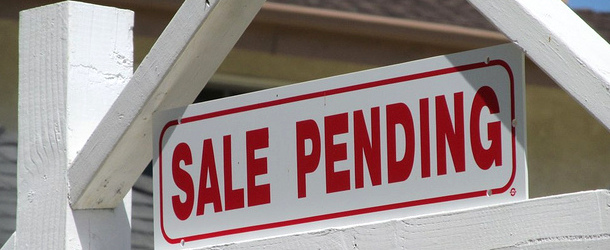I was reading through the latest quarterly home price report from the National Association of Realtors yesterday and stumbled upon an interesting nugget.
It might seem obvious, but it’s worth pointing out to prospective home buyers who might be lacking in the income department.
Simply put, if you are able to come to the table with more money for a down payment, you’ll be able to buy more house.
Allow me to explain, using the NAR’s latest Metropolitan Median Area Prices and Affordability and Housing Affordability Index release (Q2 2020).
National Median Home Price Rises to $291,300
- Expect home prices to keep rising throughout the year and next
- This should continue to hurt purchasing power despite low mortgage rates
- But if you’re able to come in with a larger down payment
- You can keep your loan amount at a reasonable level and boost affordability
In the report, they noted that the national median existing single-family home price rose to $291,300 in the second quarter of 2020, up 4.2% from a year earlier ($279,560).
For the record, the pace slowed a bit as the median price in the first quarter of 2020 was 7.7% higher than it was during the first quarter of 2019.
Still, we continue to see healthy (maybe too healthy) home price growth and it’s probably going to keep rising, which should make it more difficult for some would-be buyers to purchase homes due to DTI restrictions.
Yes, mortgage lenders limit what you can afford based on your income, but there’s a way around this if you happen to have money in the bank (or a relative willing to gift you money for a down payment).
Ultimately, the more you put down, the smaller your loan amount will be. And the smaller your loan amount, the less income you’ll need to qualify for a mortgage.
In the report, NAR highlighted the fact that affordability improved in the second quarter compared to the second quarter of 2019 because of lower mortgage rates.
But that might not continue to be the case if home prices keep surging higher and interest rates stay relatively flat.
What It Takes to Buy a Median Priced Home Today
- Let’s consider the income you need to buy a median-priced home
- Which varies based on the down payment you’re able to come up with
- As you can see, the more you put down, the less you need to make
- Of course you’ll have to save more of your money along the way or rely on a gift
This is what is now needed in the way of income to purchase a single-family home at the national median price:
If 5% down payment: income of $58,613
If 10% down payment: income of $55,528
If 20% down payment: income of $49,358
Assuming you’re a frugal person who actually socks away savings, unlike most Americans, you’ll be able to buy the median priced home despite having significantly lower income than other individuals.
In fact, if you’re able to come in with a 20% down payment, you can buy that $291,300 median home price with less than $50,000 in annual household income.
Meanwhile, someone only able to muster a 5% down payment will need to be making nearly $60,000 per year.
NAR assumes a mortgage rate of 3.29% and a monthly principal and interest payment limited to 25% of gross income.
You might be thinking that the person with a lower income probably has more difficulty saving, but that’s not always the case.
There are plenty of folks who simply live beyond their means, despite making more money, and wind up with nothing in the way of savings.
The point here is that you don’t need to make a ton of money in order to buy a house. You’ll just need more money for the down payment.
Another benefit of a higher down payment, specifically of 20% or more, is that you can avoid mortgage insurance entirely.
Additionally, you’ll be able to obtain a lower mortgage rate because pricing adjustments are lower when your loan-to-value ratio (LTV) is 80% or less.
You’ll also have a decent chunk of equity in your home, which will give you the ability to sell it if need be, or refinance in the future.
And overall, you’ll have more lending options when you put more money down, along with fewer close calls if the numbers don’t quite add up while in underwriting.
Avoid Other Debt and Your Income Goes Further
- If your income is constrained and not expected to increase
- There’s another way you can further your purchasing power
- Simply by paying off debt and not accumulating new debt prior to home purchase
- This means more of the income you have can go toward a monthly mortgage payment
Another way to boost your home buying power is simply to avoid other debt.
If you don’t have any outstanding credit card debt, auto loans, student loans, etc., your income will go further when it comes to the mortgage.
When lenders determine how much you can afford, they combine all your monthly liabilities from your credit report and use your income to offset them.
If you have a ton of liabilities, your income won’t go as far since it will already be swallowed up by car payments, credit card payments, etc.
Conversely, if you’ve paid off your car and carry no other debt, that full amount of income will be available to offset your housing costs, boosting what you can afford.
Read more: What you can afford isn’t necessarily what you should spend.

